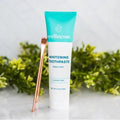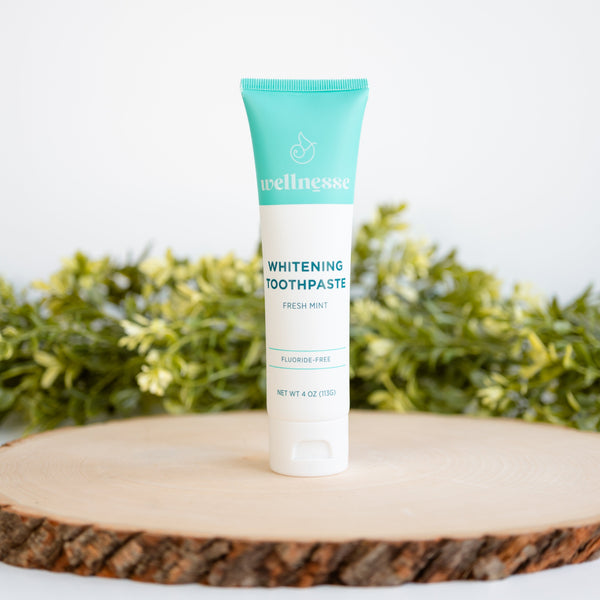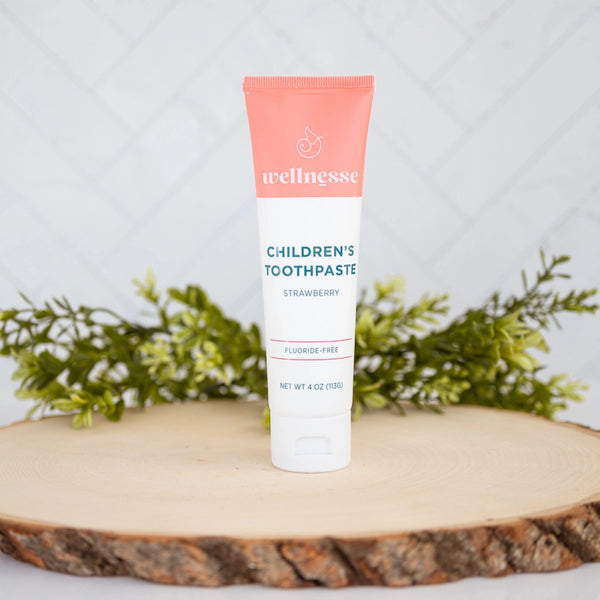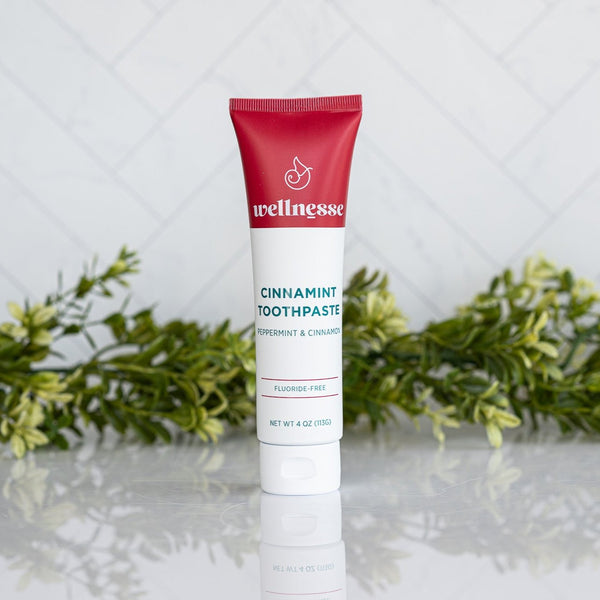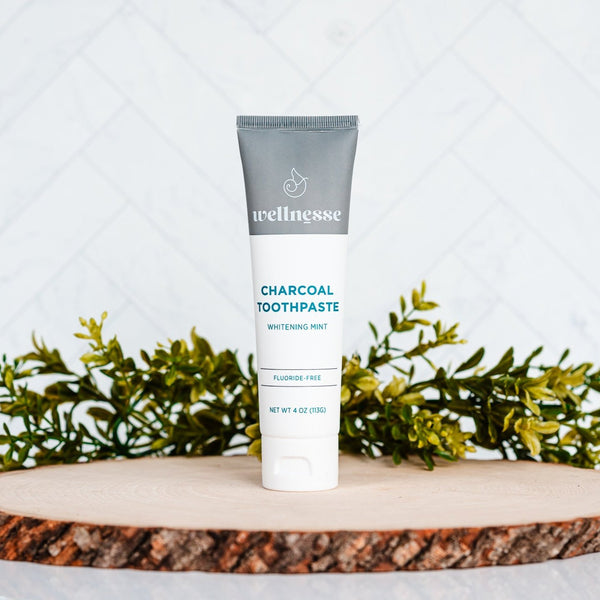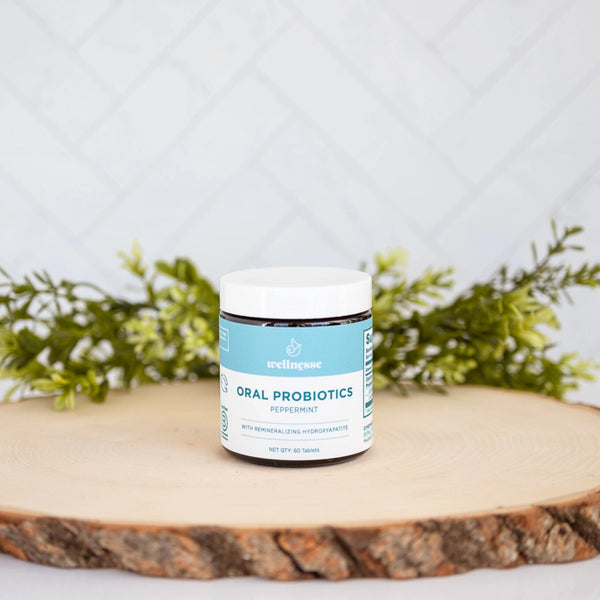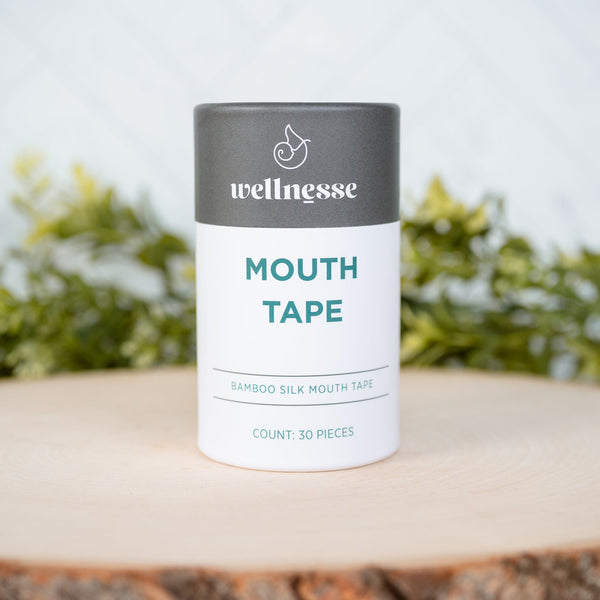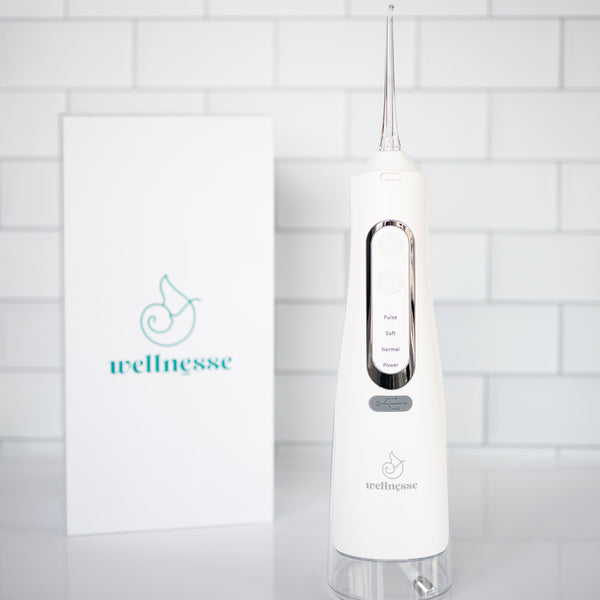Tooth enamel is the hard, protective outer layer of our teeth, but it doesn't last forever on its own. Over time, acidic foods, bacterial plaque, and everyday wear can chip away at enamel minerals in a process called demineralization. Calcium phosphate toothpaste has garnered attention as a cutting-edge way to strengthen and even rebuild tooth enamel. Calcium phosphate refers to a family of minerals that make up the majority of our tooth enamel, with hydroxyapatite being the most notable form. By adding these minerals into toothpaste, scientists and oral health experts aim to remineralize teeth – essentially restoring lost calcium and phosphate to the enamel structure. The result is an enamel-strengthening toothpaste formula that can reinforce weakened areas and help ward off tooth decay.

The Science of Tooth Enamel and Demineralization
To understand why remineralizing ingredients matter, it's important to know what tooth enamel is made of. Tooth enamel is composed almost entirely of minerals. It consists of a crystalline calcium-phosphate compound called hydroxyapatite, which gives enamel its renowned hardness. As tough as enamel is, however, it has an Achilles' heel: acid. When oral bacteria feed on sugars, they produce acids that can slowly eat away at the enamel surface by dissolving its minerals.
Fortunately, our bodies have a built-in defense. Your saliva is rich in calcium and phosphate ions, and it constantly bathes the teeth to help deposit minerals back into the enamel. This natural repair process is called remineralization, and it's happening in your mouth every day. However, saliva can only do so much, especially if our diet is very acidic or high in sugar, or if oral hygiene is lacking. This is where a toothpaste to remineralize teeth comes into play. The idea behind such a product is to boost the supply of minerals to your teeth during brushing, tipping the balance in favor of remineralization. For decades, fluoride has been used for this purpose: fluoride in toothpaste helps form a more potent mineral compound in enamel and attracts calcium and phosphate from saliva. However, a more direct approach is now available: adding calcium and phosphate directly to toothpaste. The goal is to create an enamel-building toothpaste that provides the raw materials to rebuild the enamel crystal lattice on the spot.
Fluoride: A Major Concern
Young children, who tend to swallow toothpaste, are at particular risk of a condition called dental fluorosis – a staining or mottling of the permanent teeth caused by excess fluoride intake during enamel development. In mild cases, fluorosis results in white, speckled patches on the teeth; in more severe cases, it can lead to brown discoloration or surface irregularities. Even beyond fluorosis, some people have other reservations about fluoride. High levels of fluoride over a long time have been linked to effects on bone health and thyroid function, although such issues generally arise from environmental exposure or swallowing, not from normal brushing. On a more immediate level, standard fluoride toothpastes often carry warning labels instructing users to avoid swallowing and to contact poison control if large amounts are ingested. This cautionary labeling can be unsettling for those trying to instill good brushing habits in their young kids. The idea of a healthy toothpaste without fluoride appeals to parents and individuals who want to avoid potential fluoride risks while still maintaining dental health.
What Is Calcium Phosphate (Hydroxyapatite)?
The star ingredient replacing fluoride in these new toothpastes is a form of calcium phosphate known as hydroxyapatite. Hydroxyapatite is not a synthetic chemical or drug – it's actually the same mineral that comprises the bulk of our teeth and bones. Approximately 95–97% of tooth enamel and around 70% of the layer beneath (dentin) are made of hydroxyapatite crystals. This means when you brush with a hydroxyapatite toothpaste, you are essentially applying the very substance your enamel is built from. It's a biocompatible, non-toxic mineral, so unlike fluoride, it poses no harm if a bit is swallowed.
Hydroxyapatite has been used in medical and dental applications for decades (from bone grafts to sensitive teeth treatments), but only recently has it taken center stage as a toothpaste ingredient. Interestingly, the concept isn't entirely new: as far back as the 1970s, NASA scientists were investigating hydroxyapatite for repairing astronauts’ teeth after long space missions. Soon after, Japanese researchers adopted the idea and launched the first hydroxyapatite-based toothpastes in the 1980s. Today, this compound is a proven player in oral care abroad – Japan and several other countries have officially recognized hydroxyapatite as an effective anti-cavity agent in toothpaste.
If you're examining a toothpaste label, hydroxyapatite might be listed under different names. Some brands highlight it as "micro-hydroxyapatite", indicating extremely small particles of the mineral that can penetrate microscopic enamel pores. Others use a larger particle form called micro-hydroxyapatite, closer to the natural crystal size found in teeth. A calcium hydroxyapatite toothpaste is one that uses this calcium-phosphate compound as its star ingredient for remineralization.
How Does Calcium Phosphate Rebuild Enamel?
The mechanism is both simple and remarkable. As you brush, microscopic particles of hydroxyapatite are deposited onto your tooth surface. Because they are made of the same material as the enamel, they can merge into weak spots in the enamel structure. The paste's mineral content fills in tiny cracks, pores, and scratches in the enamel, effectively patching up areas of demineralization. Over time, repeated use causes these particles to integrate and crystallize into the tooth's existing enamel matrix, making the enamel harder and denser again.
Benefits for Whitening and Sensitivity
Aside from fighting cavities, calcium phosphate toothpaste offers some welcome cosmetic and comfort advantages. One such benefit is tooth whitening. Hydroxyapatite naturally has an opaque white color. When it binds to the teeth, it can form a new mineral layer, making the teeth appear brighter. Essentially, as the enamel is replenished with fresh hydroxyapatite, it also acquires a whiter hue. Users often report a gentle whitening effect over time, not the same as a bleaching treatment, but a notable improvement in removing that dull, translucent look of eroded enamel. Unlike harsh abrasives or peroxides found in dedicated whitening products, this whitening is a byproduct of strengthening the teeth, so it doesn't come with added sensitivity or enamel wear. Speaking of sensitivity, hydroxyapatite is excellent for relieving tooth sensitivity. This makes sense, given that hydroxyapatite not only occludes the open dentin tubules but also integrates to rebuild the protective mineral barrier.
Gum Health and Beyond
Strengthening enamel is obviously great for teeth, but what about your gums and overall oral health? It turns out remineralizing toothpaste can help here as well. By repairing enamel and reducing plaque buildup, a calcium phosphate toothpaste creates a healthier environment for your gums. A smoother, mineral-rich tooth surface is harder for plaque bacteria to cling to, which means less irritation along the gumline. Researchers have observed that hydroxyapatite-based oral care can improve periodontal health (gum health) in patients, likely due to its plaque-reducing and enamel-rebuilding effects. Healthier teeth lead to healthier gums: when acid-producing bacteria are kept in check and enamel is intact, the gums are less likely to become inflamed or infected.
Some brands also incorporate hydroxyapatite into dedicated gum repair toothpaste formulas, pairing it with herbal extracts or vitamins to further soothe the gums. While no toothpaste can magically regrow gum tissue, using one that minimizes plaque and strengthens teeth can give your gums a chance to heal and tighten around the teeth. Hydroxyapatite even exhibits mild antimicrobial properties – studies suggest that it can hinder the attachment of harmful bacteria to teeth, and its presence helps maintain a neutral pH in plaque. Unlike strong antibacterial agents, though, it doesn't upset the balance of your mouth's microbiome. This mineral is so biocompatible that it has no adverse effect on beneficial oral flora and is safe even if accidentally swallowed.
Key Remineralizing Toothpaste Ingredients
Not all toothpastes are equal when it comes to remineralization. If you're shopping for a product to rebuild enamel, it's helpful to know which ingredients contribute to that goal. Let's look at some common remineralizing toothpaste ingredients and what they do:
-
Hydroxyapatite (Calcium Apatite): The superstar ingredient we've been discussing. Often labeled as nano-hydroxyapatite, this is a form of calcium phosphate in oral care engineered to bond with your enamel and directly replace lost minerals. A toothpaste containing hydroxyapatite is a top choice for actively strengthening and repairing enamel.
-
Calcium Carbonate: This is a common abrasive in natural toothpastes, but it also provides a source of calcium. While calcium carbonate alone isn't as advanced in remineralization as hydroxyapatite, it can help buffer acids and supply minerals in a pinch. It's often combined with fluoride or other agents rather than used as a standalone remineralizer.
-
Xylitol: A natural sweetener (from birch trees or corn) that doesn't directly rebuild enamel, but plays a supportive role. Xylitol can inhibit cavity-causing bacteria; with fewer bacteria, there is less acid attacking your enamel, which allows your teeth's natural remineralization processes to keep up. Many remineralizing toothpastes include xylitol to promote a healthier oral environment.
-
Calcium Phosphate Salts: Besides hydroxyapatite, you might see ingredients like tricalcium phosphate (TCP) or calcium sodium phosphosilicate (sometimes marketed as NovaMin). These compounds release calcium and phosphate ions when exposed to saliva. For example, NovaMin is a bioactive glass that dissolves to emit mineral ions and has been used in certain sensitivity and repair toothpastes. Such ingredients work synergistically with fluoride or on their own to remineralize early lesions in enamel.
When examining a toothpaste's label, keep an eye out for these ingredients if your goal is to remineralize and protect your teeth. In particular, hydroxyapatite and fluoride are the heavy hitters for rebuilding enamel, each with its approach. Others, like calcium compounds and xylitol, add extra support by providing raw materials or improving the oral environment.

Product Availability and Recommendations
When considering a transition to calcium phosphate-based toothpaste, it’s important to remember that oral health is highly individual. What works best for one person may not be ideal for another. This is why consulting with your dentist before making a change is always recommended. Dentists can evaluate your unique dental needs, including your risk for cavities, sensitivity, history of enamel erosion, and specific cosmetic goals. They are also up to date on the latest research and product options, enabling them to recommend the most effective and safe toothpaste for your situation. Some calcium phosphate toothpastes are available over the counter, while others may require a prescription. Your dentist can help you determine which type is most suitable and whether you might benefit from a combination of remineralizing ingredients that is best for your family.
Incorporating a calcium phosphate toothpaste into your daily oral care routine is straightforward, but a few key strategies can help you get the most benefit. Begin by using the toothpaste as your primary brushing product, twice a day, just as you would with any standard toothpaste. For optimal remineralization, avoid rinsing your mouth immediately after brushing, as this allows the minerals to remain on your teeth longer and enhances their effectiveness. If you use a mouthwash, consider choosing an alcohol-free, neutral pH formula to avoid interfering with the remineralizing action. For those with additional oral health concerns, your dentist may suggest supplementing your routine with other products. These might include remineralizing gels, varnishes, or mouthwashes containing calcium phosphate, or targeted treatments for sensitivity. Regular dental checkups are essential for monitoring your progress and making any necessary adjustments to your dental regimen.
Choosing the Best Toothpaste and Where to Buy
With so many options on the market, how do you choose the best toothpaste to restore enamel for your needs? Here are a few tips:
-
Check the active ingredients: As discussed above, you'll want a toothpaste that contains a proven remineralizing agent. If you prefer a fluoride-free route, look for hydroxyapatite specifically. The packaging might tout terms like "nano-hydroxyapatite" or simply "calcium phosphate." A toothpaste with calcium phosphate listed among the main ingredients is a good sign that it can actively rebuild enamel. On the other hand, if you're okay with fluoride, you might choose a paste that contains fluoride along with a calcium compound.
-
Consider your specific goals: A toothpaste for enamel repair is formulated for additional benefits. Read the labels and marketing materials to determine if a given toothpaste is optimized for whitening, gum repair, or as an all-in-one enamel booster. If you have sensitive teeth, make sure the toothpaste addresses that. If you want whiter teeth, look for mention of polishing or stain removal in addition to remineralization.
-
Be prepared for a different feel: Fluoride-free toothpastes like hydroxyapatite ones sometimes have a different texture or foaminess compared to standard drugstore toothpaste. They may not foam as much, and the taste can be milder or have less of that "minty bite," since they often use natural flavor oils. This doesn't affect their efficacy, but it's something to note so you're not surprised by the experience.
-
Safety and family use: One huge advantage of calcium phosphate-based toothpaste is that it's safe if accidentally swallowed, making it a smart choice for young children. You can let your kids use an enamel-strengthening hydroxyapatite paste without the worry that comes with fluoride ingestion. Some pediatric dentists recommend hydroxyapatite toothpaste for children as soon as they get teeth, specifically because it poses no ingestion risk. Adults who are concerned about cumulative fluoride exposure also find peace of mind in using these formulas daily.
-
Cost and availability: The best remineralizing toothpastes with cutting-edge ingredients like nano-hydroxyapatite tend to cost a bit more than standard toothpaste. They are also somewhat newer to the market, which means you might not find them in every supermarket or pharmacy yet. Many people choose to buy calcium phosphate toothpaste online or from natural product stores. You can easily order remineralizing toothpaste online through the manufacturers' websites or retailers that specialize in oral care. As demand grows, these products are becoming more widely available, but don't be surprised if your local shop hasn't caught on yet. The slightly higher price is often due to the purity and research behind the ingredient, and many users feel the investment is worth the improvement in their dental health.
-
Trustworthy brands: Because toothpaste that rebuilds enamel is an emerging trend, be sure to purchase from reputable companies. Look for brands that provide transparency about their ingredients and any testing or studies they have done. For instance, Wellnesse offers a fluoride-free whitening toothpaste that uses micro-hydroxyapatite alongside other natural ingredients to strengthen enamel. Choosing a trusted brand ensures you're getting a quality formulation that truly contains what it claims and is free from unwanted additives.
Remember that remineralization is a gradual process; give it a few months, and you should start to notice that your teeth feel smoother, firmer, and perhaps even look a bit brighter. That's the payoff of giving your teeth the minerals they crave.
Innovations and Future Directions
The field of dental care has witnessed remarkable advancements in calcium phosphate technology, leading to more effective and targeted toothpaste formulations. One of the most significant breakthroughs is the development of functionalized tricalcium phosphate (fTCP), a next-generation ingredient designed to overcome the limitations of standard tricalcium phosphate (TCP) and enhance the delivery of essential minerals to tooth enamel. Traditional TCP has long been recognized for its ability to provide calcium and phosphate ions, the building blocks of healthy enamel. However, a major challenge with standard TCP in toothpaste is its tendency to interact prematurely with other active ingredients during storage.
Functionalized tricalcium phosphate (fTCP) addresses this issue through a process known as “functionalization.” In this approach, TCP particles are coated with a protective layer that prevents unwanted interactions with other ingredients while the product is in the tube. This protective barrier remains intact during storage, ensuring that the active minerals are preserved in their most effective form. Once the toothpaste is applied in the mouth, the coating is rapidly broken down by saliva. A targeted release mechanism allows calcium and phosphate ions to become available precisely where they are needed: at the tooth surface, to drive the remineralization process. The advantages of fTCP extend beyond improved stability. This “smart” delivery system not only boosts enamel repair but also supports long-term cavity prevention. fTCP formulations can be tailored for different dental products, such as toothpastes, varnishes, or gels, by adjusting the type of protective coating to suit each application’s chemistry and intended use time. These innovations signal a promising future for calcium phosphate-based oral care.

Maintaining good oral health requires the basics – diligent brushing and flossing, a balanced diet, and regular dental check-ups. But the formulation of your toothpaste can make a meaningful difference in how well you protect and reinforce your teeth day to day. Calcium phosphate toothpaste is proving to be an excellent ally in the quest for a stronger, healthier smile. It embodies a shift toward more natural, biocompatible oral care without compromising on results.
Sources
-
GoodRx – Is Hydroxyapatite Toothpaste Better Than Fluoride? A Dentist Weighs in on the Debate.
-
Healthline – Should You Be Worried About Fluoride Toothpaste?
-
Van Scoyoc Periodontics (perionc.com) – Remineralizing: The Fluoride vs. Hydroxyapatite Debate
-
NASA News – Tech Today: Semiconductor Research Leads to Revolution in Dental Care
-
News-Medical – Comparing the caries-preventing effect of a fluoride-free, hydroxyapatite toothpaste and a toothpaste with sodium fluoride
